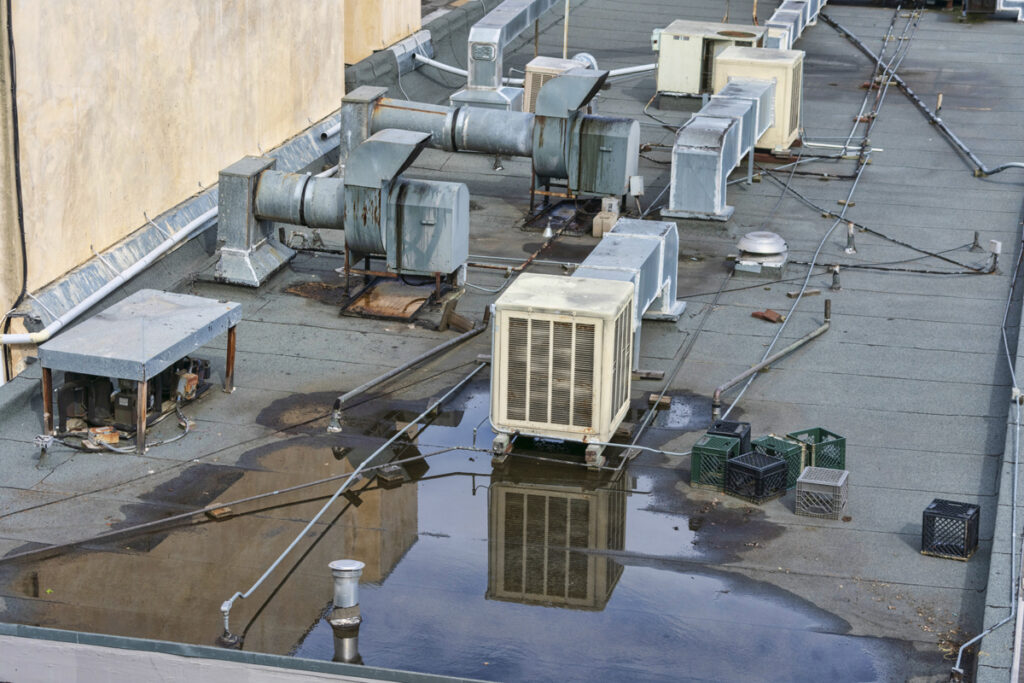
If you own or manage a commercial building, the roof is one of your most important assets — and one of the easiest to overlook. Over time, even the strongest roofing systems can develop problems that lead to expensive repairs, water damage, or even a full roof replacement.
Roof leaks are the #1 problem for commercial buildings. They’re usually caused by aging materials, poor drainage, or damage to the roof membrane. Moisture infiltration can lead to mold growth, insulation damage, and interior water stains.
Fix: Schedule regular roof inspections and address leaks immediately to prevent further damage.
A poorly installed commercial roof may look fine at first, but problems can appear quickly — including seam separation, membrane bubbles, and reduced lifespan.
Fix: Hire a certified and experienced commercial roofing contractor with a track record of quality installations and warranties.
Ponding water is common on flat commercial roofs where drainage isn’t adequate. If water sits on your roof for more than 48 hours, it can degrade the membrane and cause leaks.
Fix: Improve drainage systems and ensure the roof has a proper slope during installation or reroofing.
Certain single-ply roofing systems like EPDM are prone to shrinkage over time. This can cause pulling at seams, flashings, and walls — increasing the risk of water intrusion.
Fix: Inspect older membranes regularly and re-secure or replace affected areas.
Strong winds can lift loose roofing materials, especially if the roof edges or flashing aren’t properly secured. This is a major risk in hurricane- or storm-prone areas.
Fix: Reinforce edge details and flashing, and conduct post-storm inspections for any signs of uplift.
Debris, leaves, and dirt can clog your commercial roof drainage system. When water backs up, it can cause ponding, leaks, and structural stress.
Fix: Clean your roof drains and gutters regularly, especially after storms or during fall.
Foot traffic, dropped tools, or falling branches can puncture your commercial roof membrane, leading to leaks and insulation damage.
Fix: Limit rooftop access, use walk pads, and inspect for punctures after any maintenance work.
Blisters form when air or moisture gets trapped under the roof surface. They weaken the membrane and can eventually cause cracking or leaks.
Fix: Address minor blisters early before they expand and compromise the roof system.
Flashing seals around vents, HVAC units, and skylights can fail due to age or poor installation, allowing water to sneak in.
Fix: Inspect flashing regularly and reseal or replace deteriorated sections.
One of the biggest commercial roofing mistakes is neglecting routine maintenance. Most issues — from small leaks to major failures — start as preventable problems.
Fix: Set up a commercial roof maintenance plan with annual or semi-annual inspections to catch issues early.
Your commercial roof is a major investment. Ignoring small issues today can lead to major repair costs tomorrow. By staying on top of common problems like leaks, ponding water, and flashing failure, you can extend your roof’s lifespan and avoid business disruptions.